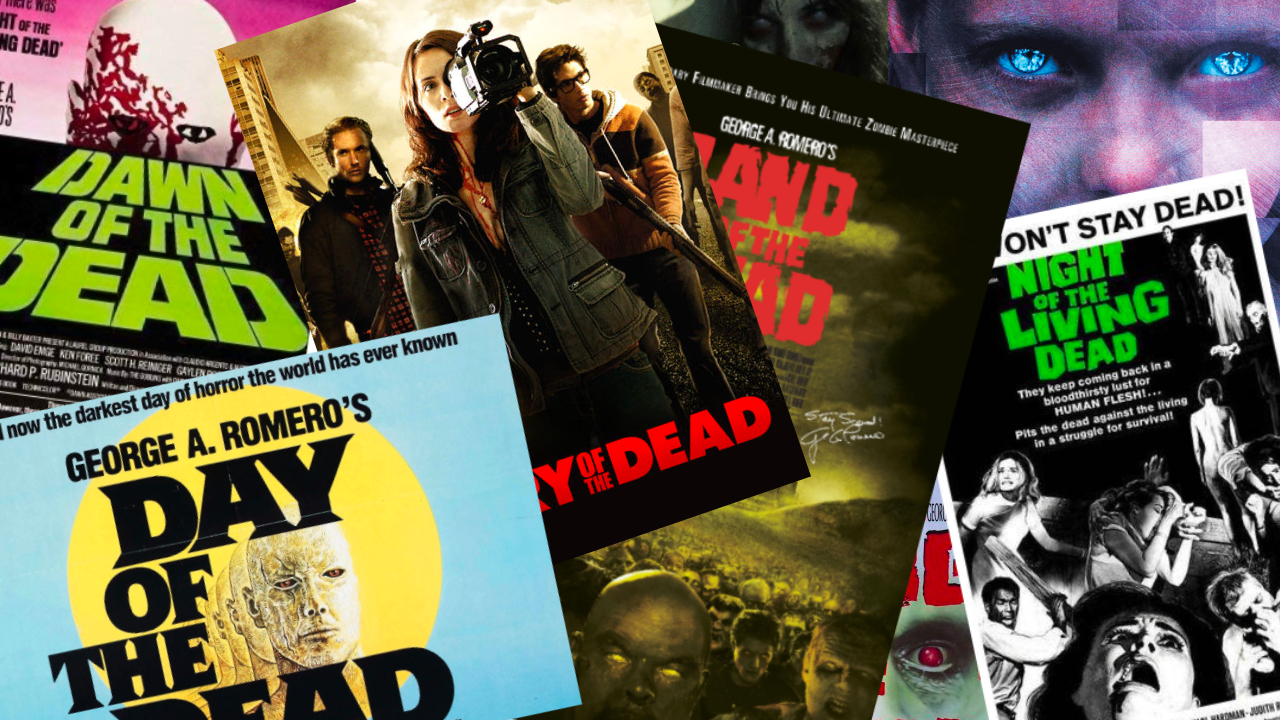George A. Romero was the god of zombie films. His directorial debut, Night Of The Living Dead, transformed the monster from Haitians hypnotised by voodoo to reanimated cadavers only stopped with a bullet through the brain. It was also the launchpad for a series that would span six entries and five decades, thanks to some masterful gore and satirical storytelling.
To celebrate the life of the master of the undead, Hammer’s ranked every Dead film he ever made. The two official remakes – Zack Snyder’s Dawn Of The Dead and Tom Savini’s take on Night… – have also been thrown in. Nothing unapproved, though: reviewing all the knockoffs and parodies Romero inspired would take between now and whenever the zombie apocalypse does finally happen...

8. Survival Of The Dead (2009)
The final Dead film is undisputedly the nadir of the lineage. Inspired by America’s then-decades-long presence in the Middle East, Romero imagined it as a tragedy that would lament the unending and pointless nature of war. However, the end product is a story of two feuding families that’s as nonsensical as it is boring. And the zombies are deeper in the background than ever before.
Somehow, Survival…’s effects are the worst of any entry (yes, even the 1968 Night…). Ropy green screens and makeup sully what should be granting everyone respite from all the loathsome characters, flat acting and hideously offensive Irish accents. As Romero’s final film, it’s a heartbreaking finish to the career of a horror icon.
7. Diary Of The Dead (2007)
Romero went from pioneer to back-seat driver when he dabbled in the found footage genre. The director planned the fifth Dead entry to be the antidote to the “dizzying” and ambiguous Blair Witch Project. However, by the time of its theatrical release, Rec and Cloverfield had already done what he wanted to do – except better.
To its credit, Diary… uses zombies to talk about the YouTube generation’s voyeurism and distrust of mass media almost a decade before “fake news” became mainstream discourse. There are also some batshit set pieces: predominantly the Amish fogey lobbing dynamite at the undead. None of that excuses the overacting, patronising voiceover and cheap and incessant jump scares, though.
6. Land Of The Dead (2005)
After 28 Days Later reignited the zombie film, Romero was inspired to revisit the subgenre that he defined. And he was given a budget that finally let him use the ideas he cast aside during Day Of The Dead’s argumentative production.
Land… has plenty to say on America’s class divide, represented by the slums of Pittsburgh, the skyscraping luxury of Fiddler’s Green and the zombies themselves. Some critics reckon that the fireworks’ distracting of the hordes comments on the US’s “shock and awe” military tactics in Iraq as well. However, beyond that and some magnetic performances, there’s nothing here the saga hasn’t explored before. The “intelligent zombie” subplot recycled from Day… feels especially repetitive.
5. Dawn Of The Dead (2004)
Dawn… producer Richard P. Rubinstein signed off on this remake, directed by Zack Snyder with a script by future Guardians Of The Galaxy maestro James Gunn. The pair aspired to create a darker, “realer” take on Romero’s zombie myth, but it’s still drenched in macabre imagination. Who’ll ever forget that opening, or the undead baby?
For all its carnage and compelling characters though, Dawn… ’04 lacks the biting satire of Romero’s original. The master himself once said of the redo: “There was nothing going on underneath.” As a popcorn action horror blockbuster, it ticks all the boxes, yet contemporaries 28 Days Later and even Shaun Of The Dead have infinitely more to say.
4. Night Of The Living Dead (1990)
You can’t blame Romero for remaking Night Of The Living Dead. Its slip into the public domain meant the auteur saw minimal money from the most pivotal zombie film ever, while lesser directors raked it in with unauthorised spinoffs. Why shouldn’t he chase some paper?
However, despite gore god Tom Savini directing and Romero rewriting his own script, this is a mixed bag of body parts. On one hand, the effects obliterate the original’s and Tony Todd gives protagonist Ben all the gravitas that Duane Jones did. On the other, switching from anti-racist themes to the stereotypical “final girl” narrative subtracts much of what made the classic a classic.
3. Day Of The Dead (1985)
Day… is the last great entry in the Dead series, yet also seen as the runt of the original trilogy. You can understand why: an ensemble of hard-ass and/or overacted characters means this threequel lacks Night…’s heartbreak and Dawn…’s sense of humour. Also, Romero’s refusal to cut back on the violence led to the studio halving his budget, which kneecapped what the director originally envisioned as “the Gone With The Wind of zombie films”.
Day… is still a classic, though. The story depicts a disastrous relationship between science and the military to tap into the nuclear paranoia of the Cold War, while Tom Savini’s visceral effects have levelled up even further since Dawn…: those closing ten minutes could be his masterpiece. The happy ending brings the trilogy to a perfect close, too, following the bleak conclusion of Night… and the ambiguity of Dawn….
2. Night Of The Living Dead (1968)
Romero’s first film is arguably the most important moment in horror history. It single-handedly codified the modern zombie as a shuffling corpse, destroyed the boundaries of how much gore a motion picture could get away with and was the first entry in its genre with an African-American lead. Its box office takings – $30 million against a $125,000 budget – made it horror’s most profitable film pre-Halloween and exposed a market for transgression later capitalised on by the exploitation movement.
However, Night Of The Living Dead is infinitely more than its violence. Scholars still analyse it as a portrait of ’60s Americana: its cannibalism an attack on dog-eat-dog capitalism, its brutality reflective of Vietnam and that depressing ending a commentary on racism. On a more literal level, the effects and some performances can’t compare to later Dead films, but you’re still not a horror aficionado until you’ve seen this.
1. Dawn Of The Dead (1978)
Although it wasn’t as pioneering as Night…, Dawn Of The Dead had the budget and talent behind it to more completely realise Romero’s satirical vision. With its broader scope, it somehow lampoons every arm of American society. The media stirs up panic in a post-apocalyptic society, while gun-toting country folk happily shoot zombies for sport. Its main protagonists hole up in a shopping mall where the undead have amassed out of habit: “This was an important place in their lives,” one character explains. Then the group relish all the food and non-essentials as the outer world starves and dies, until other humans barge in to seize the refuge for themselves.
Dawn… was also Tom Savini’s crowning moment: his first foray into the zombie subgenre, yet still the measuring stick for its effects. His work was key in thrusting the film to worldwide success and controversy, amassing a buzz that translated into a $66 million box office take. Today, Dawn… remains every bit as funny, relevant and delightfully freaky as it was in 1978, and it’s the paragon that each subsequent zombie film must try (and almost universally fail) to outdo.

